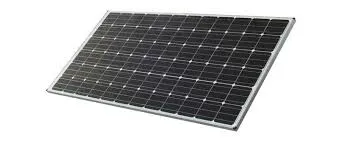Estimating Average Monthly Electricity Costs After Installing Solar Panels
Understanding the Average Monthly Electric Bill with Solar Panels
As the world increasingly shifts towards renewable energy, solar panels have become a common feature for many households looking to reduce their environmental footprint and save on electricity costs. An essential question arises for homeowners considering this transition what will the average monthly electric bill look like after the installation of solar panels?
To understand this, it's important to explore several factors, including the initial investment, local energy rates, the amount of sunlight received, and the efficiency of the solar system installed.
Initial Investment and Incentives
The first consideration in understanding the average monthly electric bill with solar panels is the initial investment required. Depending on the size and type of system installed, costs can vary widely. However, many countries now offer financial incentives, such as tax credits, rebates, and grants, which can significantly offset installation costs. In the United States, for instance, the federal solar tax credit allows homeowners to deduct a substantial percentage of their solar installation costs from their federal taxes.
In addition to federal incentives, many states offer additional rebates or performance-based incentives, which can further lower upfront costs. A lower initial investment means a potentially quicker return on investment, which can enhance the overall value proposition of solar energy.
Monthly Electric Bill Analysis
average monthly electric bill with solar panels

Once solar panels are installed, homeowners often experience a dramatic shift in their monthly electric bills. Solar panels generate energy from sunlight, which can be used to power the home, thereby reducing reliance on utility-supplied electricity. The extent of this reduction largely depends on how much energy the solar system generates and the household’s energy consumption.
On average, a typical U.S. household consumes around 877 kWh per month. Depending on various factors—such as the size of the solar installation, the local climate, and the seasonal patterns of sunlight—solar panels can offset a significant portion of this consumption. In sunny regions, homeowners might offset nearly 100% of their electrical usage during peak sunlight months. However, in less sunny states or during winter months, this percentage might be lower, resulting in some reliance on the grid.
For example, a household that produces 800 kWh through their solar panels may see their electric bill drop to a small base fee that utilities often charge, which can range from $10 to $30. In contrast, a household in a region with less sunlight that generates only 400 kWh might still face a monthly bill of $50 or more, depending on the local electricity rates.
Net Metering and Bill Credits
Many states have implemented net metering policies, which allow homeowners to sell excess energy back to the grid. When homes generate more electricity than they consume, the surplus energy is fed into the grid, earning the homeowner credits against future bills. This can significantly improve the economics of running a solar system. If a homeowner generates more energy than they use over the course of the month, they could even end up with a credit that rolls over to future months, further decreasing their future electric bills.
Conclusion
In summary, the average monthly electric bill after installing solar panels can vary significantly based on several factors, including system size, energy consumption habits, local utility rates, and available incentives. While many homeowners see a substantial drop in their monthly costs—often reduced to minimal base fees—this reduction is contingent on location and the efficiency of the installed solar system. Ultimately, transitioning to solar energy is not just about immediate savings; it represents a long-term investment in sustainability and energy independence, paving the way for a cleaner, more sustainable future. As technology advances and more incentives become available, solar energy may become an even more appealing option for households across the globe.
-
Unlocking Energy Freedom with the Off Grid Solar InverterNewsJun.06,2025
-
Unlock More Solar Power with a High-Efficiency Bifacial Solar PanelNewsJun.06,2025
-
Power Your Future with High-Efficiency Monocrystalline Solar PanelsNewsJun.06,2025
-
Next-Gen Solar Power Starts with Micro Solar InvertersNewsJun.06,2025
-
Harnessing Peak Efficiency with the On Grid Solar InverterNewsJun.06,2025
-
Discover Unmatched Efficiency with the Latest String Solar InverterNewsJun.06,2025







